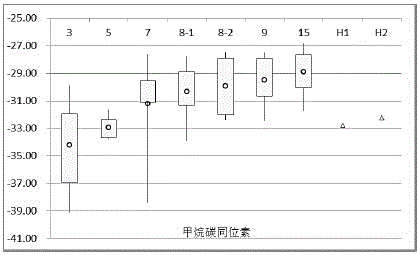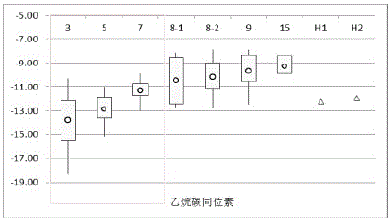Goaf gas source comprehensive judgment and prediction method
A technology of comprehensive judgment and prediction method, applied in special data processing applications, instruments, electrical and digital data processing, etc., can solve the problems of unclear gas origin from specific coal seams, many influencing factors, complex gas sources, etc., to achieve green Mining and utilization, reducing leakage, reducing the effect of greenhouse effect
- Summary
- Abstract
- Description
- Claims
- Application Information
AI Technical Summary
Problems solved by technology
Method used
Image
Examples
Embodiment Construction
[0031] The content of the present invention will be described below in conjunction with specific embodiments.
[0032] Such as Figure 1-Figure 11 As shown, a method for comprehensively judging and predicting gas sources in goafs according to the present invention includes the following steps:
[0033] S1: Determine the main coal seam and gas-bearing coal seam in the mine field, and take samples from the main coal mining seam and gas-containing coal seam;
[0034] S2: Collect the gas in the main mining coal seam and the gas-containing coal seam corresponding to the label in S1 through the desorption experiment, and test the δ value of methane carbon, hydrogen isotope, ethane carbon isotope and carbon dioxide stable carbon isotope of the desorption gas sample and gas Component volume content, the δ value is the difference per thousand of the isotope ratio of the sample relative to the isotope ratio of the standard sample;
[0035] S3: Establish multiple standard charts, and p...
PUM
 Login to View More
Login to View More Abstract
Description
Claims
Application Information
 Login to View More
Login to View More - Generate Ideas
- Intellectual Property
- Life Sciences
- Materials
- Tech Scout
- Unparalleled Data Quality
- Higher Quality Content
- 60% Fewer Hallucinations
Browse by: Latest US Patents, China's latest patents, Technical Efficacy Thesaurus, Application Domain, Technology Topic, Popular Technical Reports.
© 2025 PatSnap. All rights reserved.Legal|Privacy policy|Modern Slavery Act Transparency Statement|Sitemap|About US| Contact US: help@patsnap.com



